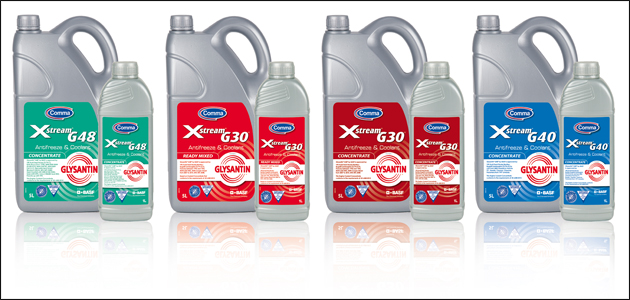
Antifreeze and coolants have had to evolve to absorb and disperse the much greater heat generated by modern engines, while providing equal protection to the multitude of elements and components they contact within different engine and cooling systems. Today, no single coolant technology can accomplish this for all makes and models.

The important differences between the three main technologies used by VMs nowadays lie in their unique chemical additive inhibitor (corrosion/erosion) packages that react with metal surfaces to produce protective layers throughout the cooling system. They’re all stable for an extended period, forming a protective barrier that prevents oxygen from reaching the metal surface and causing corrosion; they just all do it in different ways. The three types are:
G48® Silicate Based Technology – 3 year life
So called ‘NAP-free’ coolants were introduced in the 1980s. Based on established silicate technology but free from nitrite, amine and phosphate, they were designed to provide better corrosion protection for a wider range of engine metals, particularly aluminium.
G30® Organic Additive Technology – 5 year life
Silicate free OAT (Organic Additive Technology) coolants were originally developed in the 1990s, offering significantly improved corrosion protection and longer life compared to conventional products – particularly for all aluminium engines. One major advantage is that the protective layers in the engine remain stable for longer.
G40® Si-OAT (Silicated Organic Additive Technology) – 5 year life
Performance issues with silicate free OAT led to development, by German chemical giant BASF, of a new high performance antifreeze/coolant technology – Si-OAT (Silicated Organic Additive Technology). Its highly reactive silicate additive package combines the benefits of both OAT and silicate based coolant technology, building up stable and durable protective layers.
Official approvals
By far the safest applications policy is to stick with coolants that have official approvals from a wide range of VMs, such as Comma’s comprehensive Xstream® with BASF Glysantin® range of G48®, G30® and G40® products. G40® is the only coolant specified for the entire range of VAG Group models from 2005 onwards – that’s every VW, Audi, SEAT, Skoda, Bentley and Lamborghini passenger or light commercial vehicle – so you’re covering a very large slice of the car parc with a single product.
Look-up facility
By using the simple VRN look-up facility on the home page at www.CommaOil.com you can download and print a full list of recommended Comma products for your customer’s vehicle to include in a special Comma ‘Service Wallet’; supplies of which – together with a full colour Xstream® coolants wall poster – are available free from your Comma distributor.
OTHER IMPORTANT SERVICE TIPS
a) You shouldn’t mix one coolant type with another. Mixing products of different chemistries runs the risk of compromising the protective properties of both. Always refill or top up with like-for-like at the appropriate service intervals.
b) Coolant colour is meaningless. Irrespective of colour, the coolant type fitted will be specific to that engine, and the same type must be used for servicing throughout the vehicle’s life.
c) Correct application is vital. The reality is that coolants are now largely as manufacturer and model specific as engine oils. And there’s no room for mistakes, because there are instances – BMW Mini, for example – where different coolant types are specified for diesel and petrol variants within the same model range.









